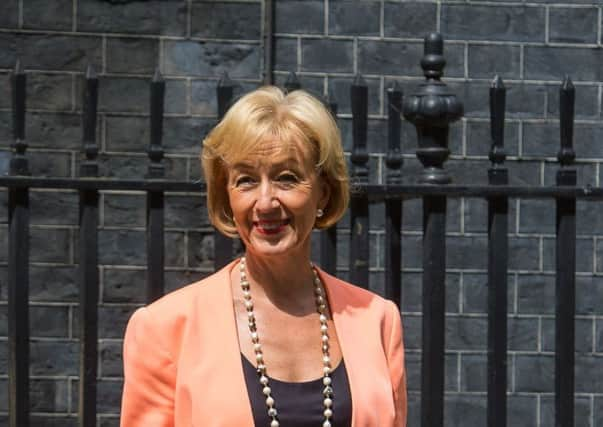Welcome stability but it's only first post-Brexit step
This article contains affiliate links. We may earn a small commission on items purchased through this article, but that does not affect our editorial judgement.


Welcoming the move in a stormy seas metaphor, NFU Scotland said the promise would provide an anchor of stability which would give a confident platform on which to negotiate future trading policies.
I was probably alone in immediately conjuring up images of the Transocean Winner oil platform run aground on the coast of Lewis, but it would be churlish not to acknowledge that the confidence which the announcement should instil will help dispel some of the jitters, at least in the short term.
Advertisement
Hide AdAdvertisement
Hide AdThe move had certainly been top of the farming unions’ wish list at meetings with UK Department of the Environment, Food & Rural Affairs (Defra) secretary of state Andrea Leadsom over the last couple of weeks. And the relative speed with which this sought-after action was taken (in Westminster terms at least) might go some way to changing the popular view of the latest occupant of what has often been termed Defra’s revolving door.
Since her appointment in the post-Brexit vote re-shuffle, the image of Leadsom portrayed in many of the farming papers has concentrated on her alleged desire for butterflies in the hills – and by implication bats in her belfry.
But her actions in listening to the industry’s plea and then putting in the effort to wrest the promise of a few years of stability from the Treasury might just stand her in a bit of a new light.
While the announcement might not spell “business as usual” once the UK steps outside the EU, the little bit of certainty means that we should at least recognise the ground-rules during the period in which the industry will inevitably be forced to confront the plethora of future support mechanism options.
For change is a certainty – as Leadsom, along with her farm minister, George Eustice, was closely involved with the so-called “Fresh Start” project, an initiative set up some years ago to provide an alternative vision of the UK’s relationship with Europe. This manifesto was clear in its opposition to direct payments, stating that support through Pillar 1-type schemes should be phased out.
But before we get too tied down in the details of new support systems – which range from the bizarrely complicated farm income insurance scheme in operation in the US all the way through the almost DIY approach adopted in Australia which allows farm profits to be banked tax free during the good times in order to be drawn upon when things take a downturn – there might be some little local issues to be sorted out first.
For, despite apparently taking on the mantle of Harry Enfield’s 1990’s comedy character, complete with rolls of £20 notes, the new post-Brexit Andrea “Leadsom-Money” promises don’t actually indicate how these funds would make their way into the pockets of Scottish farmers.
As far as I understand, the payment of common agricultural policy funds had its own mechanism – and Scotland’s farm support money was pretty much ring fenced for delivery in this country.
Advertisement
Hide AdAdvertisement
Hide AdThis left the £450 million of support for Scottish farmers outside the block grant used for assessing Scotland’s share of the overall UK budget – which is calculated on a rough per capita basis through the so-called Barnett formula.
So it looks like the formula will either need to be reconsidered – or a new deal thrashed out on how farm spending in Scotland will be financed post-Brexit.
For all I know, this might be a straightforward issue to resolve – but the history of sharing out farm support spending has often appeared to leave farmers on this side of the Border short-changed.
The most recent example of this was, of course, the carve-up of the additional EU convergence uplift cash which, despite being triggered by the low level of payments in Scotland, was shared out pro-rata across the UK. Politically sensitive at the time, a promise was made to review the allocation once area payments had settled in.
Fair to say we are still waiting on that one. For the industry’s sake let’s just hope the next cash carve-up battle is both quicker and fairer.